Israel’s art scene: Ilana Goor museum, Jaffa Tel Aviv market. Leopard print dress & suspender tights.
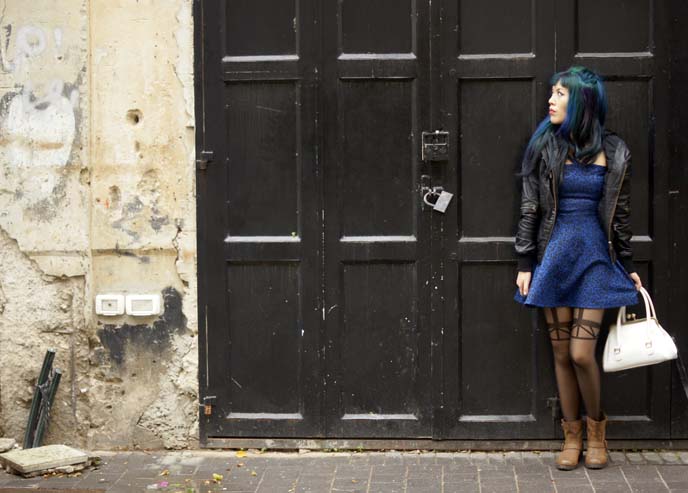
Whenever I travel, I make an effort to explore the local arts scene. I always find inspiration in alternative art museums, design stores and markets — and Jaffa, Israel was no exception.
Follow along with me, as I encounter whales, pandas, and a row of… peni?
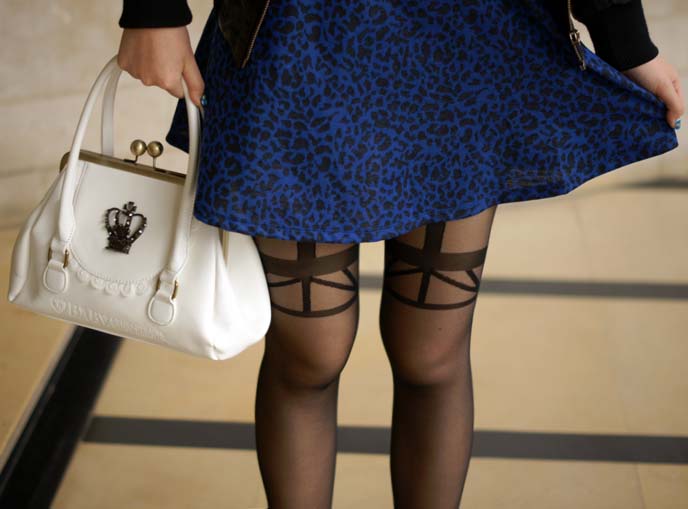
La Carmina’s outfit of the day:
Blue leopard print dress: from Apartment at Siam Discovery in Bangkok (similar to this $49 dress)
Short leather jacket with hood: similar to this one by Michael Kors
Cross pattern stockings: Jonathan Aston Harnessed Tights, gifted by UK Tights. The geometric pattern mirrors the straps of my dress.
White crown purse: Baby the Stars Shine Bright, Tokyo
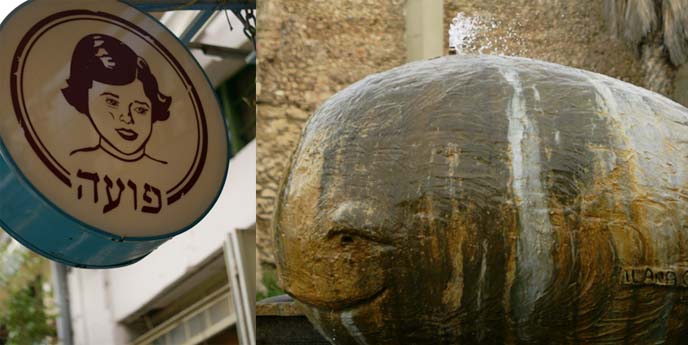
Jaffa or Yafo was an ancient port city, and now a district of Tel Aviv. As this cute fountain suggests, this was the site of biblical stories including Jonah and the whale, King Solomon and St Peter.
I should mention that while Israel’s official languages are Hebrew and Arabic, pretty much everyone speaks English. Still, I recommend having a guide like our awesome Uri Golani to help you get around in a van, and explain the history.
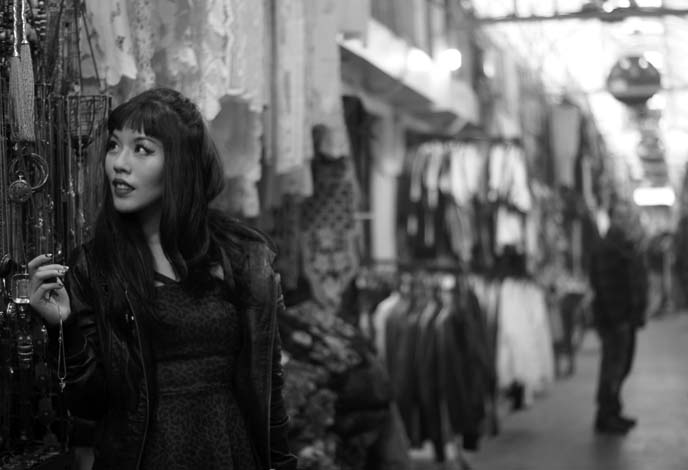
Jaffa Flea Market was like a scene from Arabian Nights. I felt like I had stepped back in time.
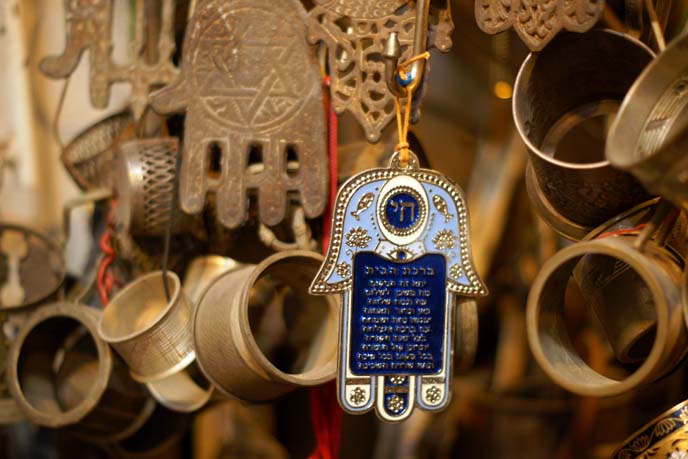
I was most intrigued by the jewelry stands, which were strung with metal hamsas: amulets shaped like an open palm, to defend against the evil eye.
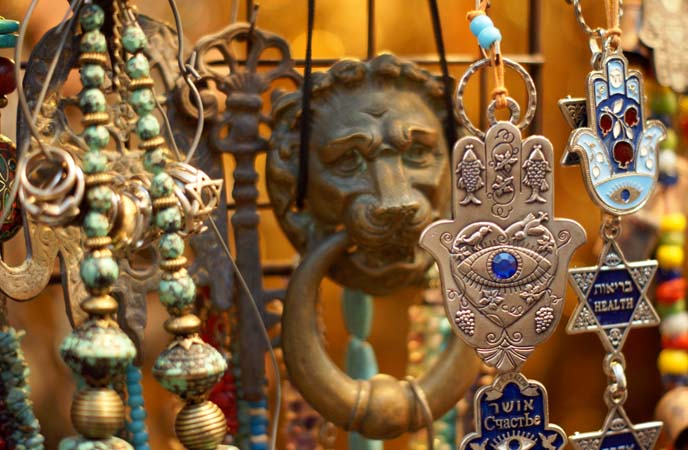
Hamsas are available online too — here are links to a gold hamsa charm and a pendant.
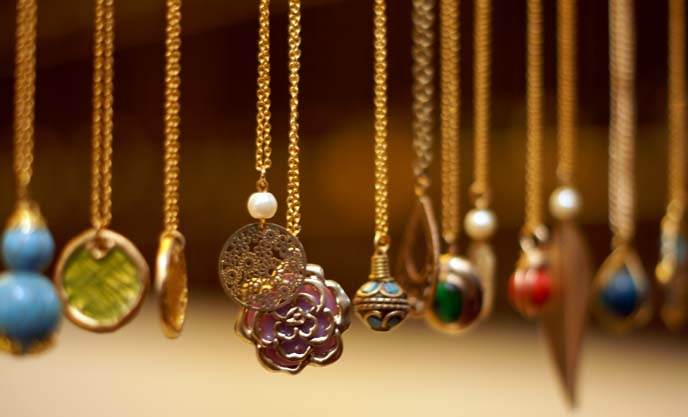
The Arabian filigree necklaces and lockets were also beautiful. (Photography by Eric Bergemann, Melissa Rundle and me.)
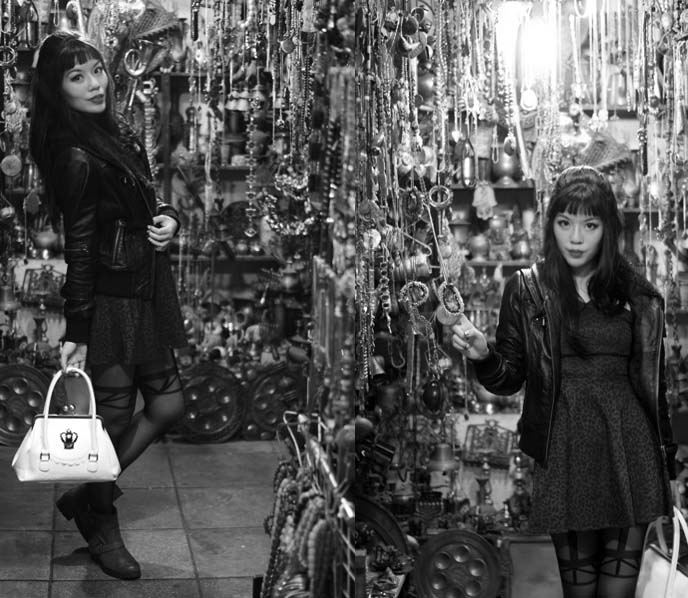
Jaffa Hill has such a long history (going back to the Bronze Age) that there are constantly new archaeological discoveries. We walked past several excavations, and even passed an abandoned building that houses flying bats!
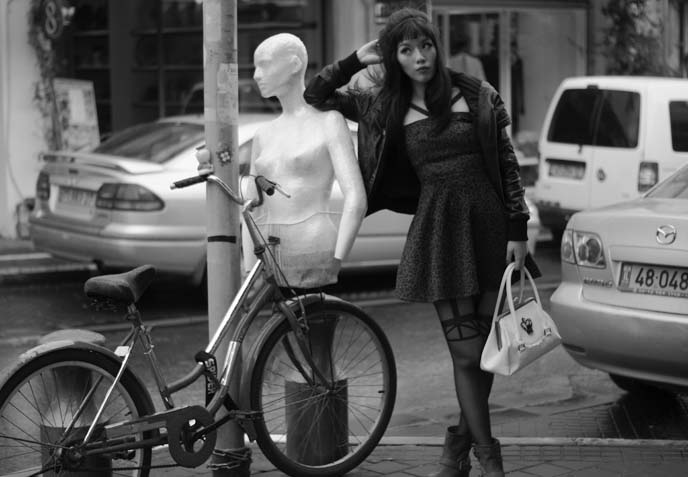
Today, Jaffa has a hippie / hipster vibe. We went into organic clothing stores, and laid-back cafes covered in ivy. Like in Portland, we saw bird murals and “creative” bicycles.

Loved the big doors and gates. Israel generally has hot weather, but you’ll want to wear a jacket and good walking shoes in Jaffa, since it’s by the water and has cobbled roads.
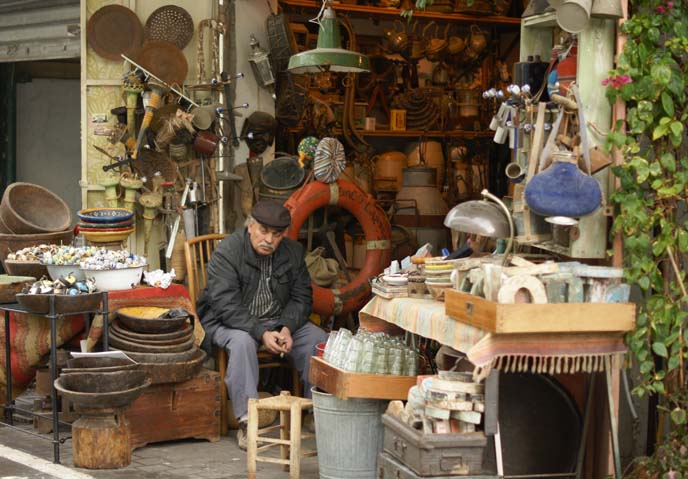
We poked our heads into modern furniture stores, including one that focused on African designs. Others sold antiques, children’s toys, you name it.
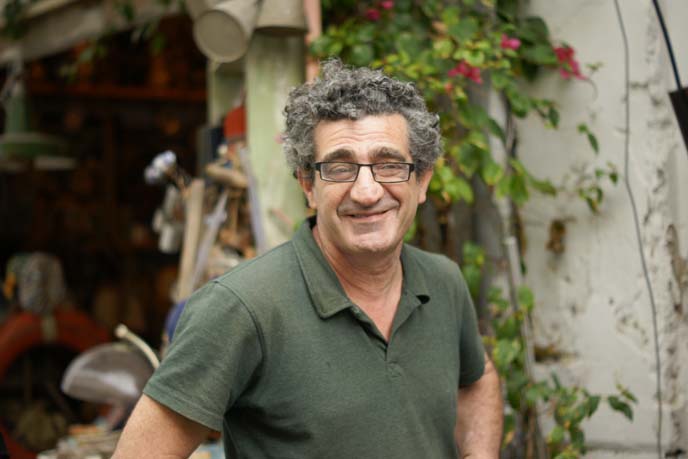
Everyone we met was friendly. Tel Aviv is ultra liberal, and nobody will make a fuss if you dress alternatively.

I generally prefer walking around and seeing street art, instead of going inside a museum. However, we got a tour of the Ilana Goor Museum, and it was the best art experience we had in recent memory.
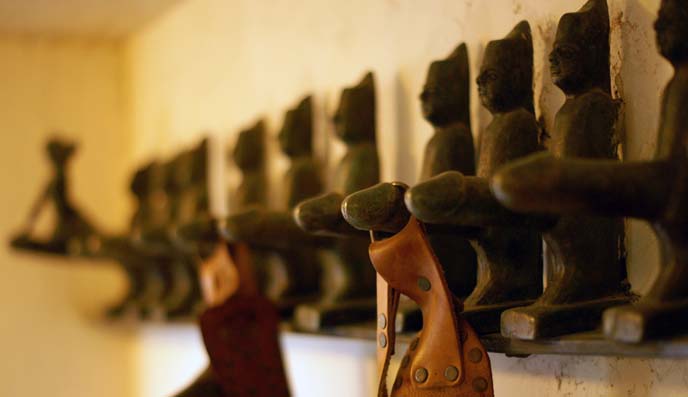
Ilana is a decorated Israeli artist, and this 18th century building is her home. Visitors come to see her eclectic art collection, which includes her own works such as funky self-portraits and this phallic coat hanger called “Turkish God of Fertility.”
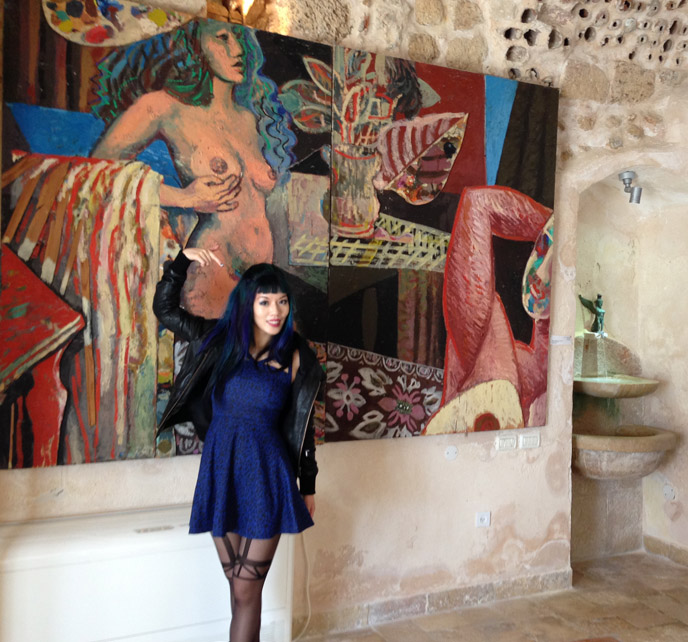
Ilana Gur actually lives here, and you can feel her personality and passion in each room. Beneath a ceiling punched with holes (an ancient form of air conditioning), I found a fellow blue-haired girl.
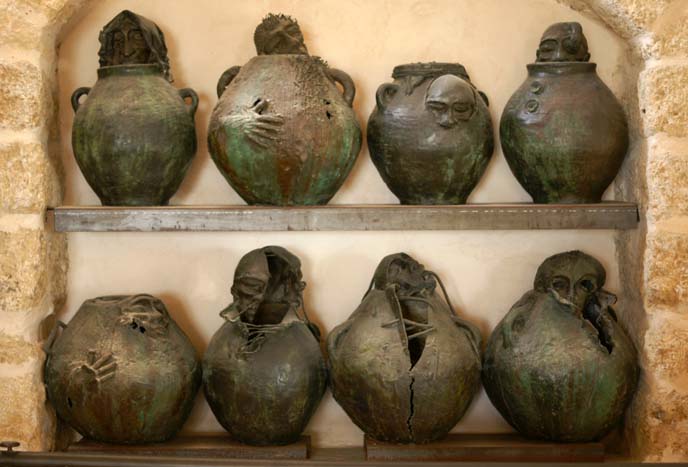
From her taste in art alone, I can tell that Ilana and I would get along. There were a number of horror-bizarre objects, such as these creatures emerging from vases.
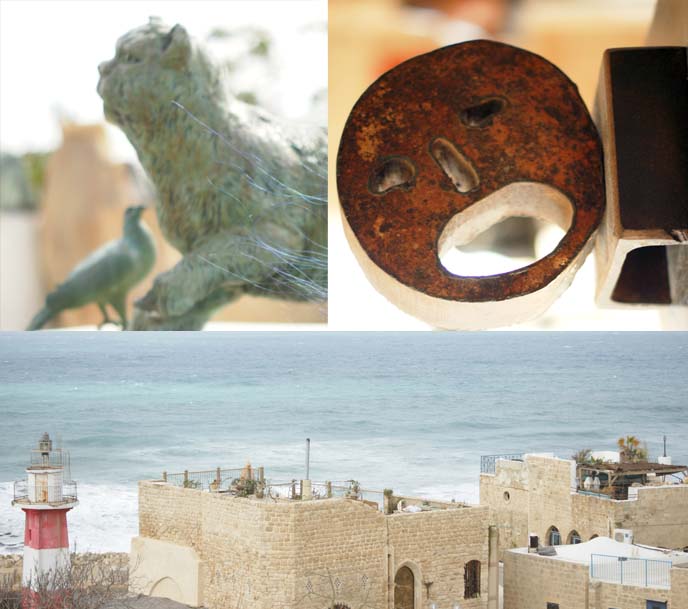
The rooftop overlooks the water, and is inhabited by offbeat sculptures including bronze cats.
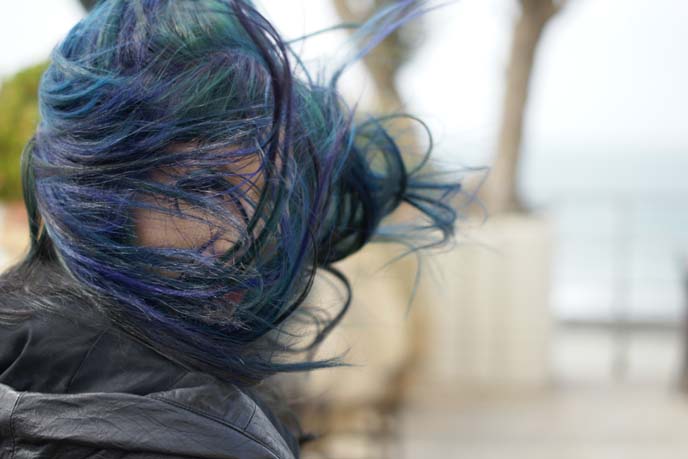
If it weren’t for the wind, I could have spent all afternoon sitting in the garden, under the olive trees.
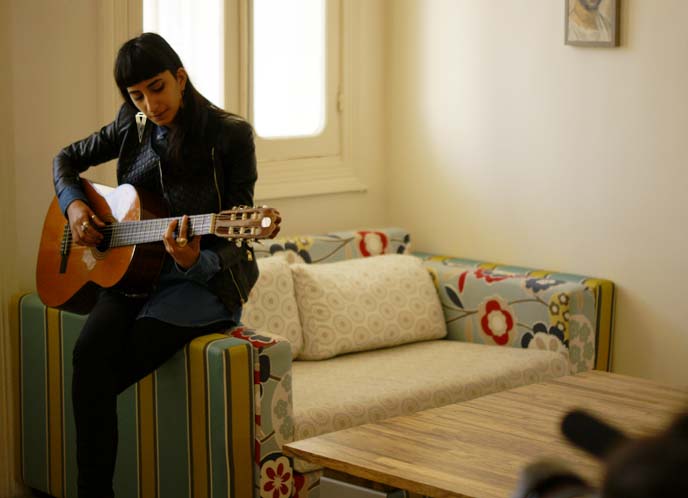
Next, we dropped by the Yafo Creative House, a space where travelers can live and collaborate with Israeli artists. The young residents hold weekly meals and exhibitions, and inspire each other to make art. We listened to this singer-songwriter perform two acoustic songs, one in Hebrew and one in English.
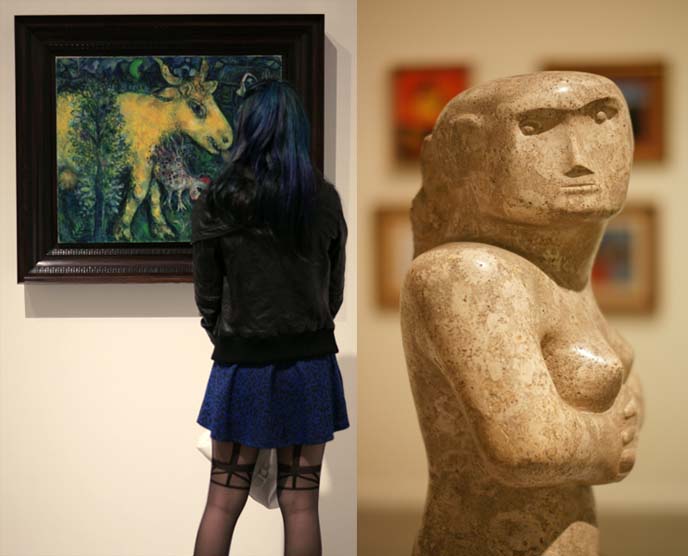
Finally, we walked around the Tel Aviv Museum of Art. There were pieces by international masters, like Monet and Picasso, but I was more interested in the modern Israeli works.
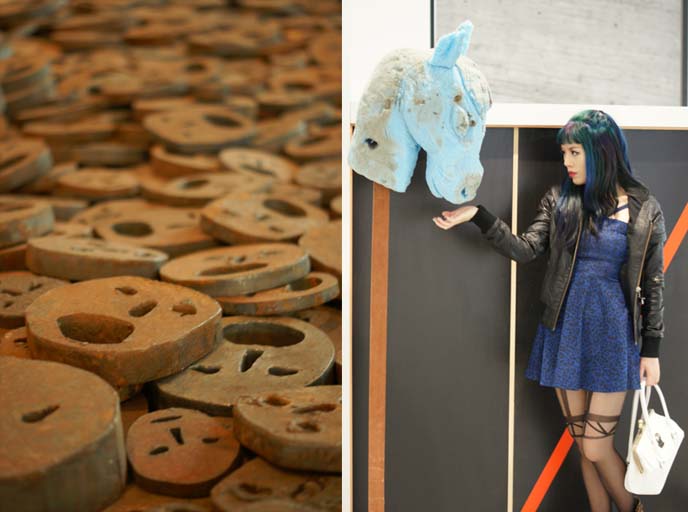
We were confused, disgusted, or amused by the various works, which ranged from obscure video projections to a giant fabric “party monster” that extended over two floors.
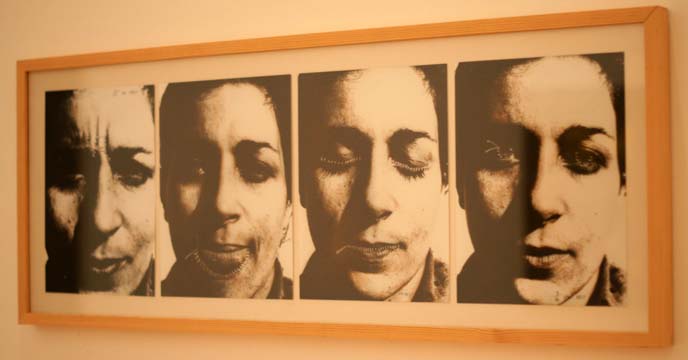
These photographs, showing a woman with her eyes or mouth sewn shut, reminded me of the lip-sewing TV show I did.

In the basement’s special exhibit, I learned that Andy Warhol did children’s book illustrations and product designs. Warhol’s robot has a “kawaii” feel to it.

Same with this panda bear banging a drum. As you can see, we filmed all throughout the trip, and will have a travel video for you soon.
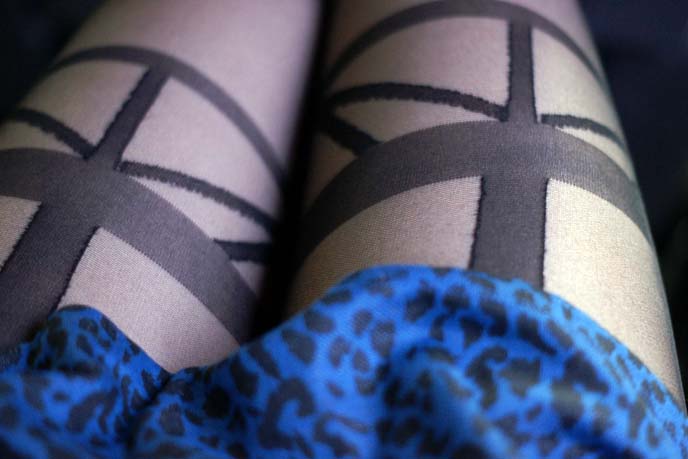
Doesn’t Israel have an intriguing design scene? What do you think of the cross tights and leopard dress I wore in Jaffa?
SHARE & COMMENT
The Hippest Places in Portland: new travel video! Food Trucks, art hotels & hipsters.

Hip, hip, hooray! My Portland travel video is out on Business Insider, in which I explore the city’s weird and wonderful subcultures. In a lot of ways, it’s my favorite episode so far.
I’m biting my nails to hear what you think… Watch the video above and on BI. Did you laugh at my “fairy dance” and pirate torture scene?
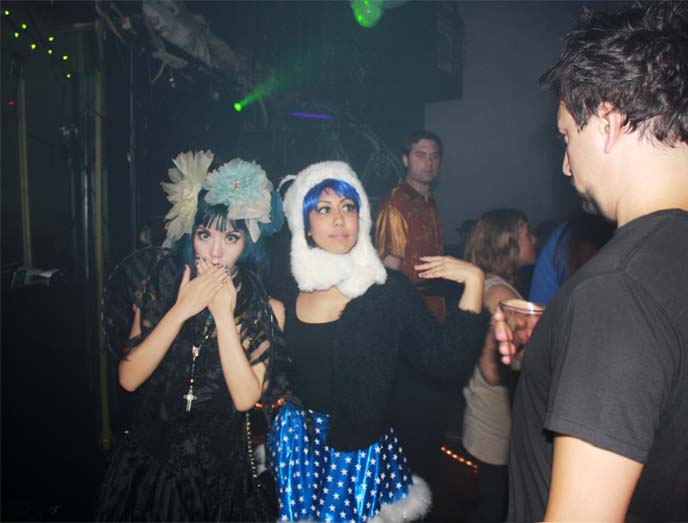
My travel series wouldn’t be possible without these two : Melissa Rundle and Eric Bergemann, who did all the shooting, editing and production. It’s hard to find people who you can successfully travel, work and Goth-party with!

In our video, we take you inside Portland’s underground subcultures. This includes a live performance of the Nightmare Before Christmas…

… complete with a spooky tree, covered with crows and brains.

We also went to the Goth-friendly Lovecraft bar (a tribute to the horror writer) and an underground warehouse party, Steep and Thorny.
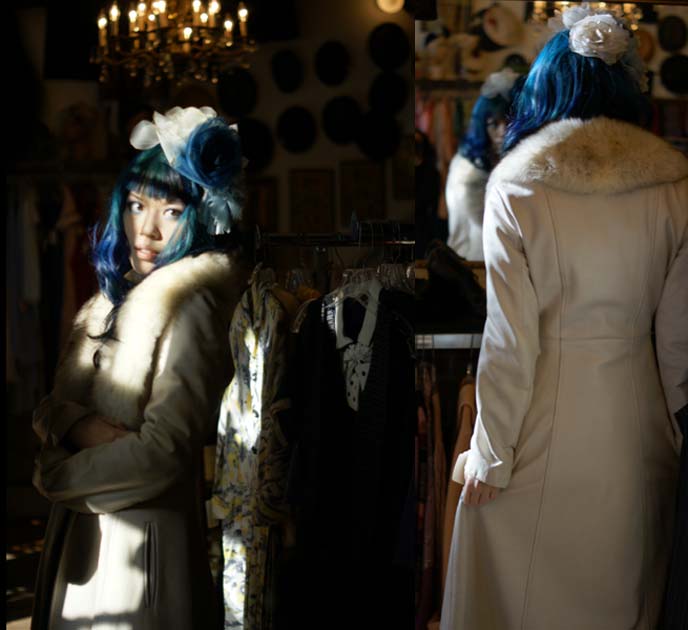
I loved Portland’s vintage clothing selection. Been searching for a disco dream-coat like this all my life.

Bokeh and ominous reflections, in the window of steampunk boutique Wells & Verne.

So many things about Portland are “me” to a T. Such as this steam-girl painting, inspired by Art Nouveau artist Alphonse Mucha.
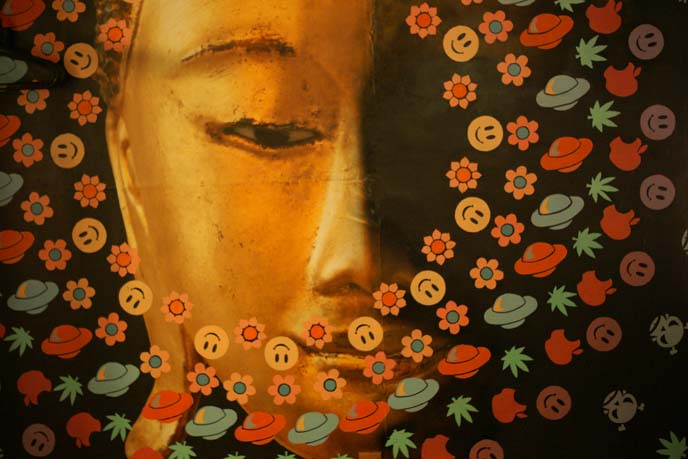
Or this rainbow Buddhist mural on the wall of my room, at the Jupiter Hotel.
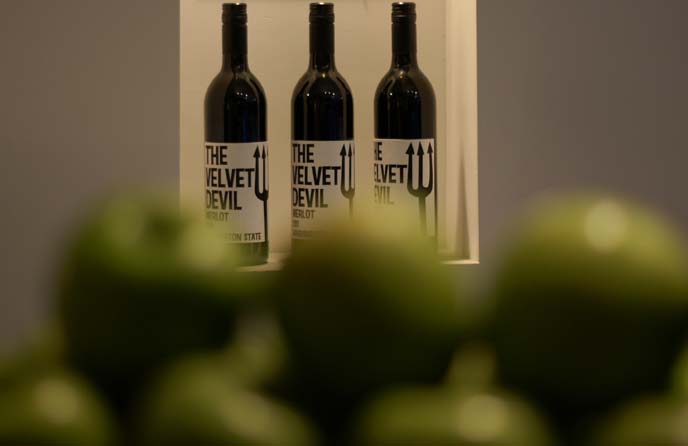
This hipster hotel must have been expecting me. Velvet Devil wine and green apples in the lobby…

… alongside modern art by local painters.

Portland’s culture is all about creativity. My room at the Jupiter Hotel had a chalkboard door, and First Mate Naomi drew a cat on it.
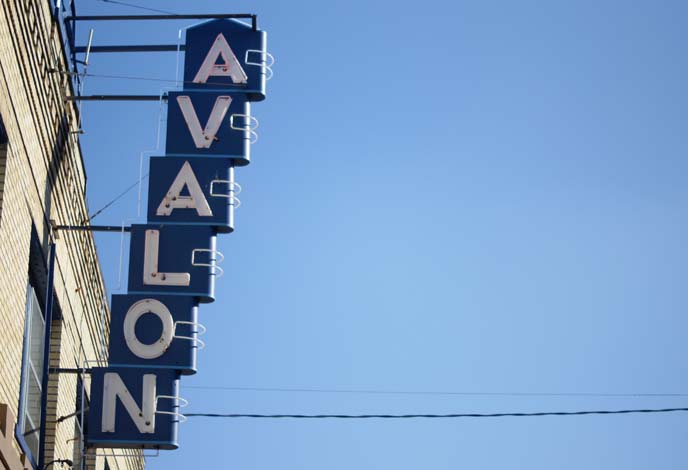
I’ll leave you with some bonus shots. This is the Avalon Theater, next to our vegan brunch cafe Paradox. I could have walked around PDX all day long, simply shooting photos.

Naomi’s mis-matched tights match the autumn foliage.
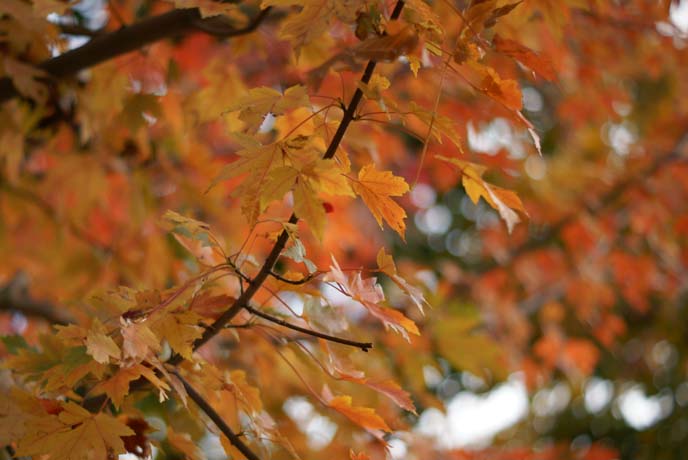
The Pacific Northwest may be grey and rainy, but you get all four seasons and there is nature everywhere.
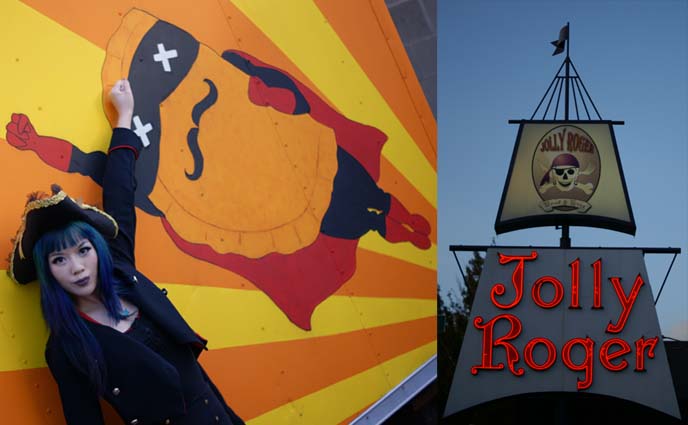
Arr! We went to a food truck pit stop, near the Jolly Roger. We sampled Mexican tacos, crepes and pumpkin butter sandwiches.
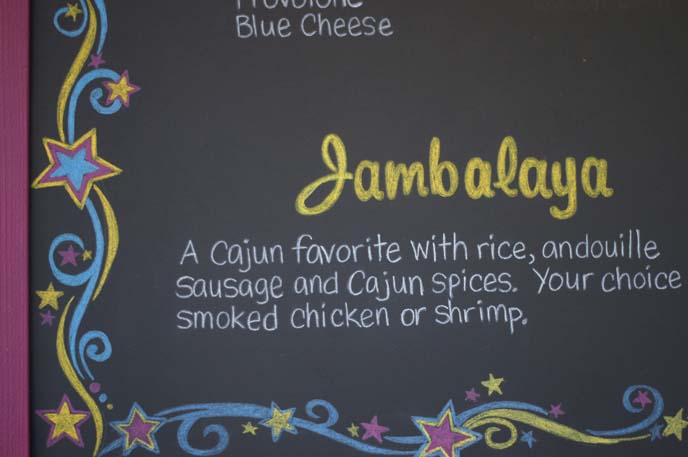
My favorite was the jambalaya, cooked fresh from a Creole truck. (New Orleans is on my list of must-visit places…)

PDX is proud of its local craft beer breweries. I enjoyed the pear and cherry ciders by Anthem Brewing.
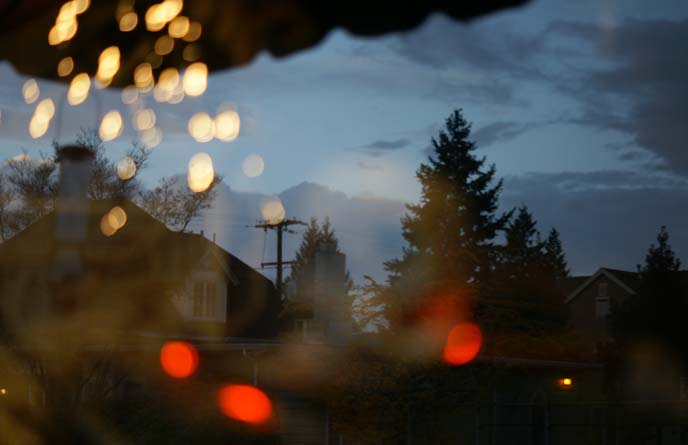
Now you know why Portland is now one of my favorite American cities. Intrigued by the quirky indie culture here? Then please take a few minutes to watch our Portland travel video, highlighting the hippest parts of the city. (Keep your ears peeled for the evil laugh!)
How are you liking my travel video series? For more photos and tips, here are all my posts about Portland alt travel.
 LA CARMINA
LA CARMINA






